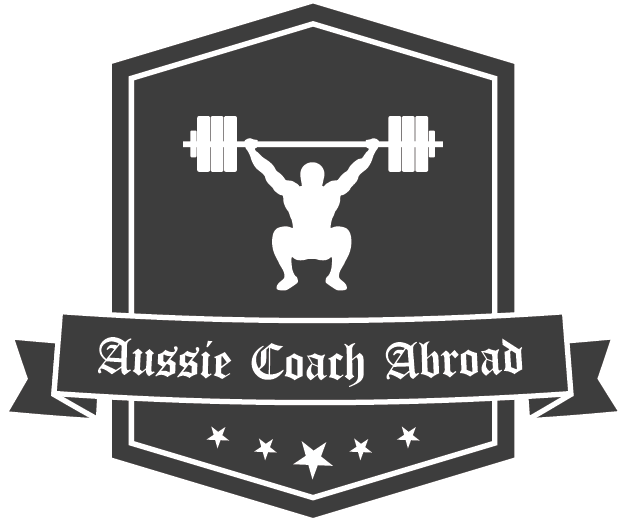The importance of cues
This may be my most relevant and important post for coaches and personal trainers. The choice of cues can be vital in terms of trying to achieve your desired outcome from your client. There are so many things to take into account when communicating with your client/athlete. Now depending on the athlete, your communication methods may change. However, your personality should not. It is important to always be yourself on the gym floor, which is connected to your delivery. The delivery of your cues is vital and must relate to the athlete and their 'why'.
Their 'why':
Now this probably the most important factor to take into account. Why is the athlete/client on your gym floor? Are they trying to get better at their sport? Are they told to be there by their coach? etc. As a Coach/Trainer, you must get to know the athlete/client and understand WHY they are in your gym. For example, if the athlete is in your facility because they are told they must attend, by their sports coach, then you may need to educate them and help bridge the gap between the gym and the sports arena. However, if they are already aware of the benefit of your expertise, then your language and syntax may be more simplistic.
Selection of cues:
Now that you have become familiar with the athlete/client's 'why', it is important to cue accordingly. You must be deliberate in the way you choose your words to correct their movement patterns. Let me be clear, when I refer to cues, I am talking about the words you say when correcting your athletes, not the instructions/demonstration. The demonstration is obviously a bit more elaborate. When it comes to cues, I will always use a maximum of 3 cues, totalling 6 words. Therefore, by wise in how you word things and try to keep it as simple as possible. For example, "Chest up", "knees out" etc.
We know that in most cases external cues are more effective [1]. However, that does not mean that there is no place for internal cues. This all depends on the athlete and how they chose to respond. If you understand their 'why' and the needs of their sport, it can empower you cue. Most specifically, if you can relate a movement to one they would do in their sport, the athlete can find a relation and will understand the cue better. For example, telling an goalkeeper to reach when coaching a rowing pattern can be effective to ensure full range of motion.
MOST IMPORTANTLY, you do not want to over-cue! Too many times I have seen coaches throw far too many cues, as well as using misunderstood terminology, at athletes. Again, I relate it to knowing their 'why'. That will give you an understanding of how to relate terms in order to get them across. Not all athletes understand specific anatomy and biomechanics, therefore, DO not cue them with something they can't understand. You will not get the desired outcome. Keep it simple and understandable.
Structure of cues:
The short-term memory capacity is 7+- 2 items [2], which leads me to stick with 6 words max! As we all know, the attention span of people is vastly shrinking. The next generation of people are like human gold fish. With this taken into account, I structure my cues in a series of importance. Let me explain...
The Serial Position effect illustrates that people tend to remember the first and last items that they attempt to remember [3]. After a visual demonstration of the exercise, I will provide my 3 cues with the presumption that only 2 will be remembered and executed. This isn't always the case, as someone who has a high training age and is dialled in may execute perfectly on the first attempt. However, if 2/3 cues are executed correctly, then that leaves more room for coaching. Best case scenario, they will remember all 3, BUT you cannot get upset when the athlete doesn't perfect all 3 cues... I blame social media for the decremented attention spans.
Application:
You must assess the athlete's training age in order to determine the most effective way to cue them. Here is how I would sum it up;
Beginner: cue after a set
Intermediate: cue after a rep
Advanced: cue during rep
I cannot stress enough how important that is. For safety purposes, if you are throwing cues at an athlete with a very small training age (beginner) during their rep, you will put them at risk of injury by oversimplifying. It is okay to let beginners make mistakes during reps, that is how they will learn and advance. On the contrary, if you have an advanced lifter making common mistakes, then you can cue them comfortably during a rep with a good chance of them correcting themselves immediately.
Summary:
Overall, it is all about the athlete. Focus on the process rather than the product. They will make mistakes, but it's your job to relate to the athlete and use words that will help educate them in the process. My biggest advice would be; keep it simple. Do not throw too many cues to highlight your knowledge.... it isn't about you.
[1] Moore, James W., Daniel M. Wegner, and Patrick Haggard. "Modulating The Sense Of Agency With External Cues". Consciousness and Cognition 18.4 (2009): 1056-1064.
[2] McLeod, S. A. (2007). Multi Store Model of Memory - Atkinson and Shiffrin, 1968
[3] Azizian, Allen and John Polich. "Evidence For Attentional Gradient In The Serial Position Memory Curve From Event-Related Potentials". Journal of Cognitive Neuroscience Early Access.Early Access (2007): 080219115128817-11.
Coach Alex
